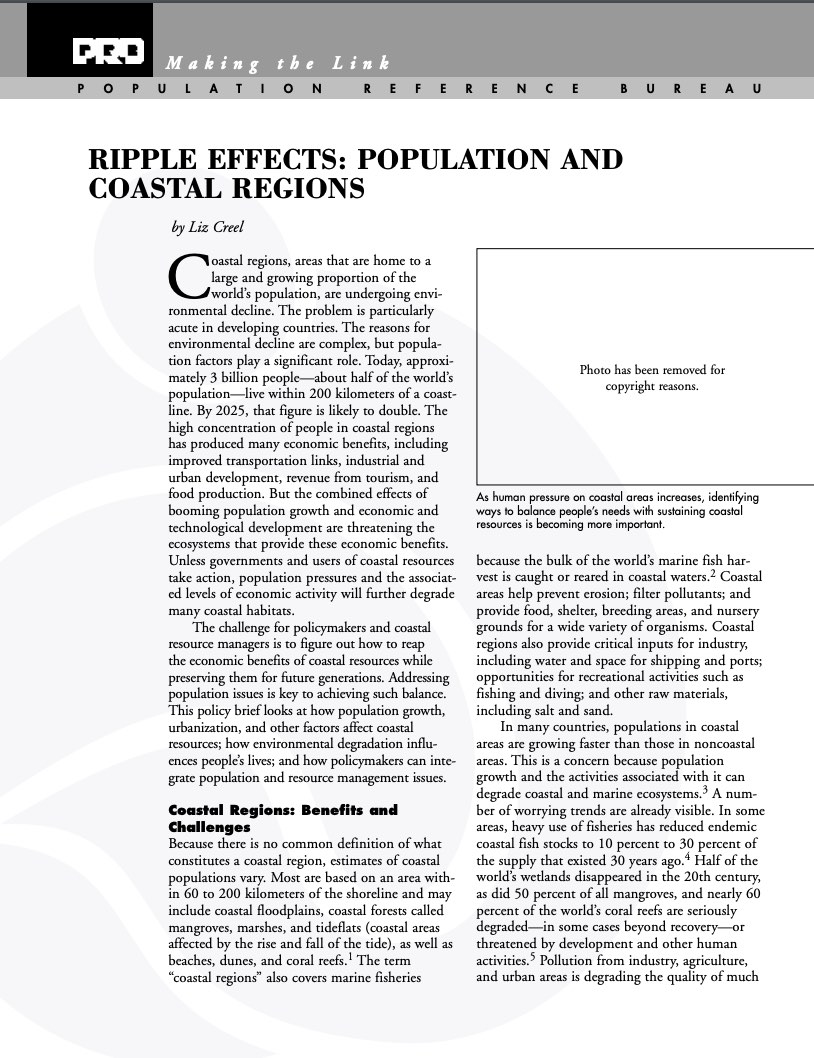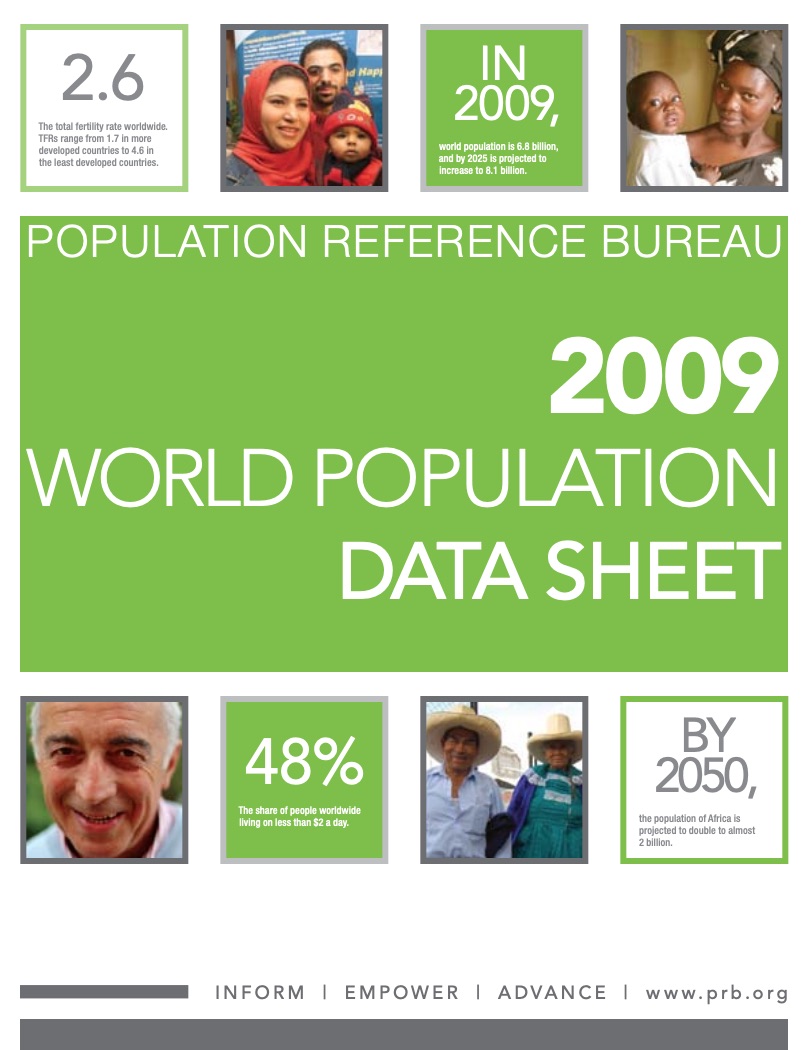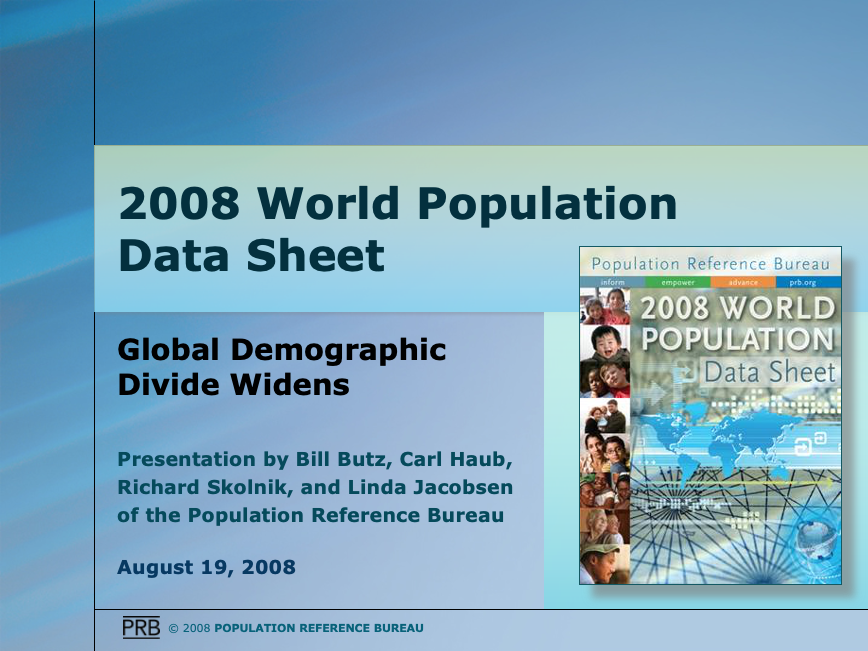Ripple Effects: Population and Coastal Regions
(2003) Coastal regions, areas that are home to a large and growing proportion of the world's population, are undergoing environmental decline.

(2003) Coastal regions, areas that are home to a large and growing proportion of the world's population, are undergoing environmental decline.
(2004) Infectious diseases continue to cause ill health and deaths to millions worldwide, despite advances in public health over the last 100 years — advances that include the development of vaccines and antibiotics and improvements in sanitation.
(2010) More than 30,000 Americans commit suicide each year; hundreds of thousands more attempt it but fail.
2009) The world is facing inevitable effects of climate change at the same time that the population is increasingly concentrated in urban areas.

(2009) Global population numbers are on track to reach 7 billion in 2011, just 12 years after reaching 6 billion in 1999. Virtually all of the growth is in developing countries.
(2011) American industries rely on good data to make targeted, wise investments. These economic, demographic and social data are largely derived from the American Community Survey (ACS).
PRB is a partner on the Palladium-led, USAID-funded Health Policy Plus (HP+) project that strengthens and advances health policy priorities at global, national, and subnational levels.
On Sept. 28, 2007, as part of the Population Reference Bureau's Policy Seminar Series, Dr. Paul Ehrlich discussed ways in which demography can greatly increase its policy impact in areas as diverse as climate change, the conservation of natural capital, and, of course, population reduction.

(2008) The demographic divide—the inequality in the population and health profiles of rich and poor countries—is widening.